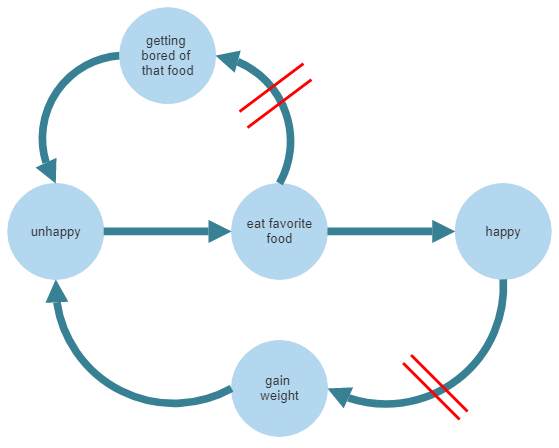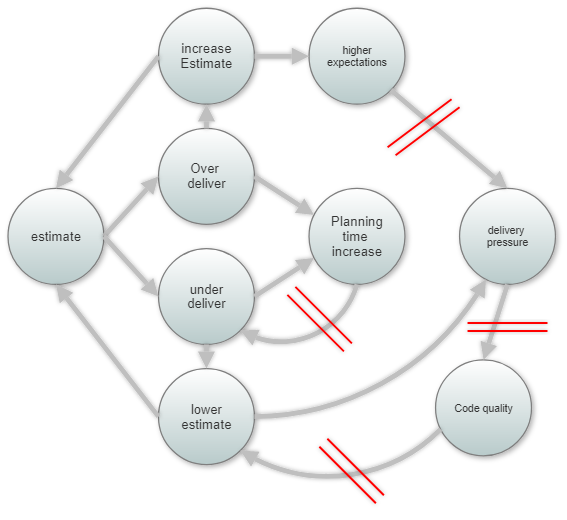KPI measurements and feedback loops
Commonly attributed to Peter Drucker a cornerstone of management is "If you can’t measure it, you can’t manage it." (which according to the Drucker Institute he never said).
It's a Damned anyhow situation. In my oberservation KPIs are plagued by linear thinking and, what I call Gamability. Let me explain
Meet the feedback loop
We are caught in a "newtonish" world of belief that there is a linear relationship between a cause and effect. Most notably visible in post mortem demand for a root cause analysis (At least science gives ceteris paribus a thougth).
In his book The Fifth Discipline the author Peter M. Senge offers a different view and model. Most system, from small atomic particles to the Universe are bound in a series of feedback loops. The emphasis here is on loops -> plural. The various execution speeds lead to observable results, that can't be explained with single linear thinking.
Let's take a sweet example, that should be easy to relate:

You don't feel happy, so you eat your favorite food. Now your happy. Two (obviously simplified) feedback loops kick off. The red lines indicate that the loops work with a delay.
The upper one removes the "favorite" from the food, while the lower one removes the hapiness inducing effect. Pretty obvious and as I said grossly simplified.
You get what you measure
Lets pick a Scrum example. When you are blessed* with Atlassian's Jira, you have an infinite number of reporting choices and can track anything. For practical advise on what to track, checkout David Farley's book Modern Software Engineering: Doing What Works to Build Better Software Faster.
We shall track: Sprint planning accuracy. Someone wants to know how close the ~~guesswork~~ estimates are to the delivered number of story points (Not debating the usefulness of such a metric here).

(The case "right on target" is omitted for its low probability). Let's say you miss the target: you need to spend more time planning which reduces implementation time available. Less time to deliver increases delivery pressure which might invite cutting corners and taking up more technical debt.
Let's say you are ahead of time, delivered your story points early. Do you increase your estimates to generate higher expectations (and then delivery pressure) or would you slack off for the rest of the sprint?
AGAIN: This is a very simplified diagram. In an actual organisation there are many more loops, big and small, fast and slow at work.
As long as such a measurement's purpose is team enlightenment, these loops aren't very strong. However when they become attached to consequences, the effects kick in fast.
So be careful what you measure, you will get it.
* One person's blessing is another one's curse
Posted by Stephan H Wissel on 30 March 2023 | Comments (0) | categories: Business Learning